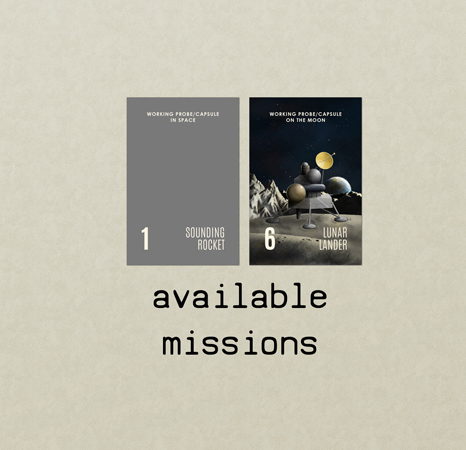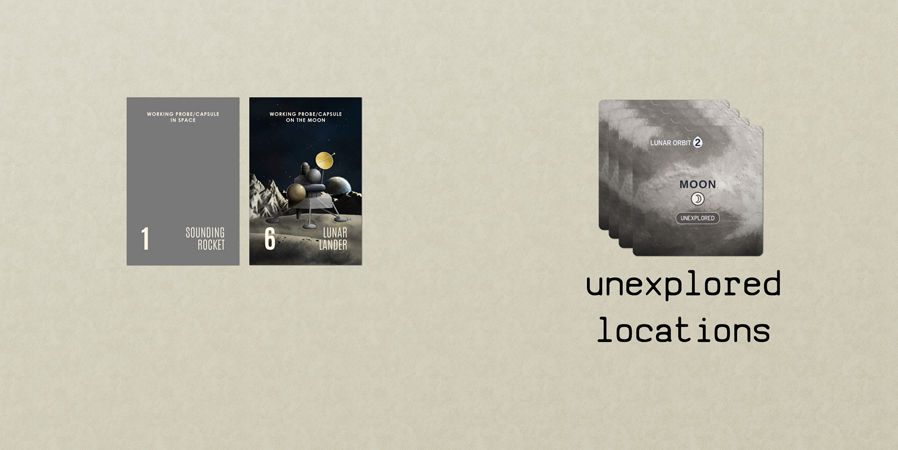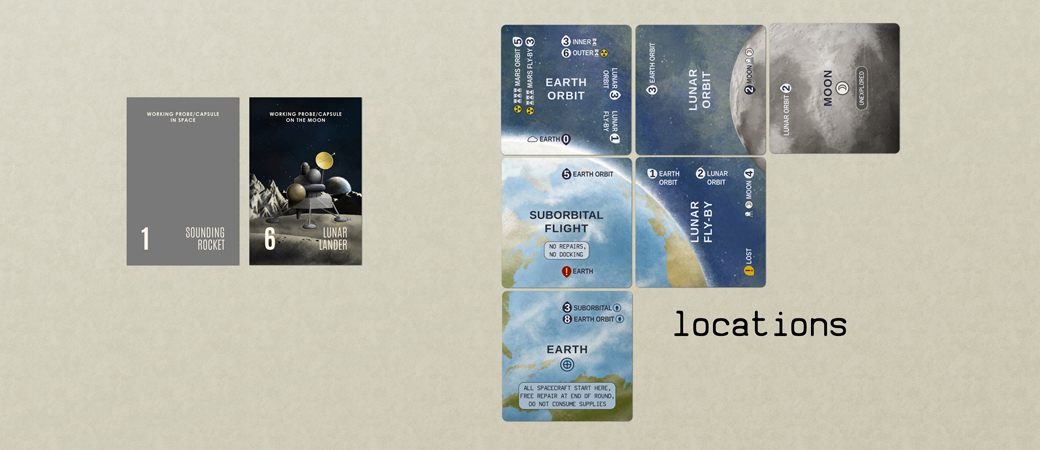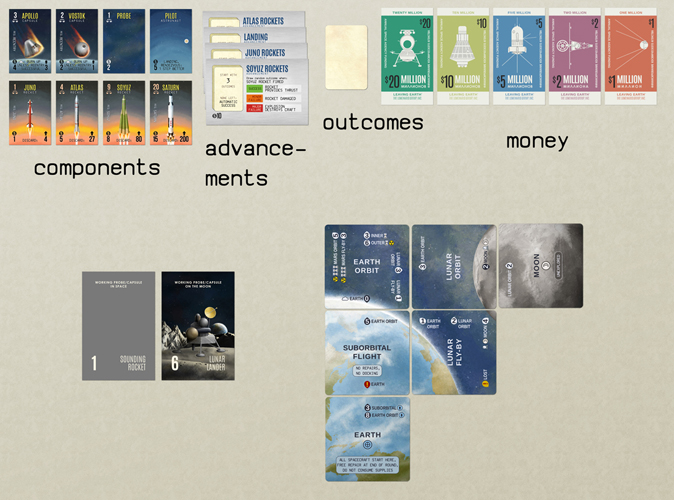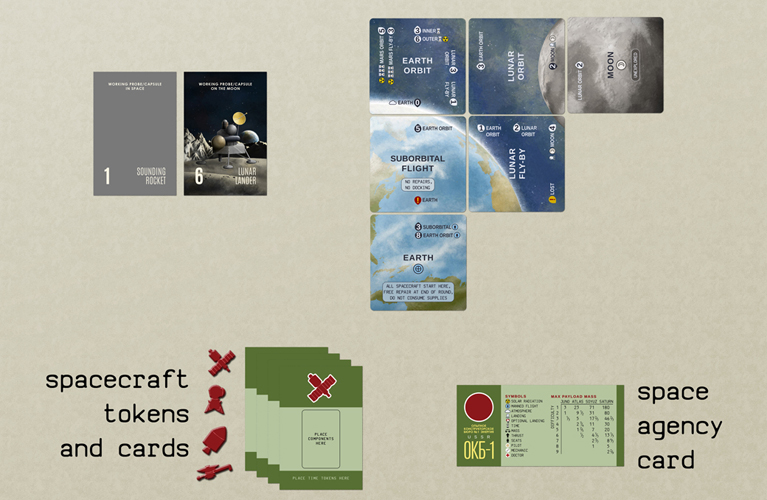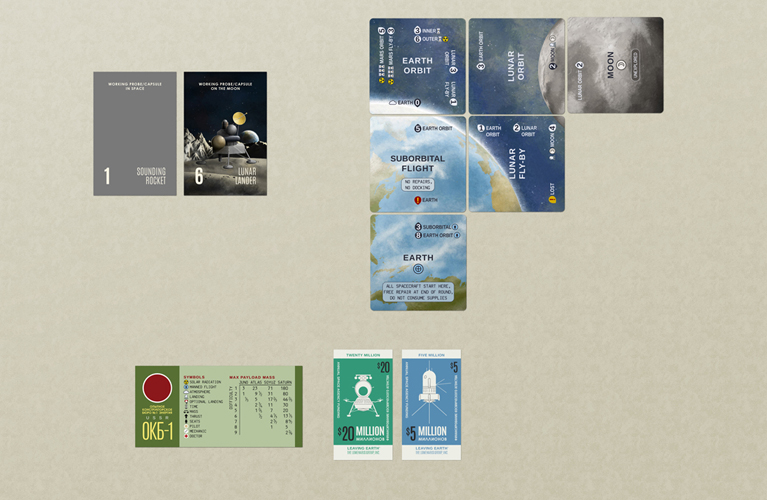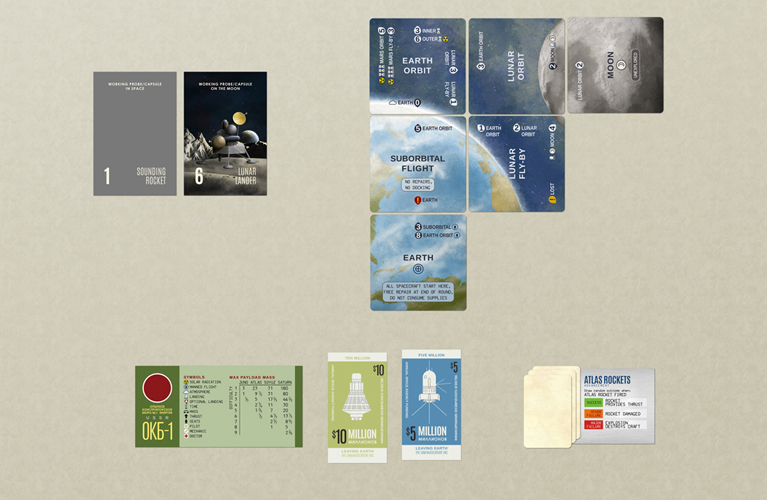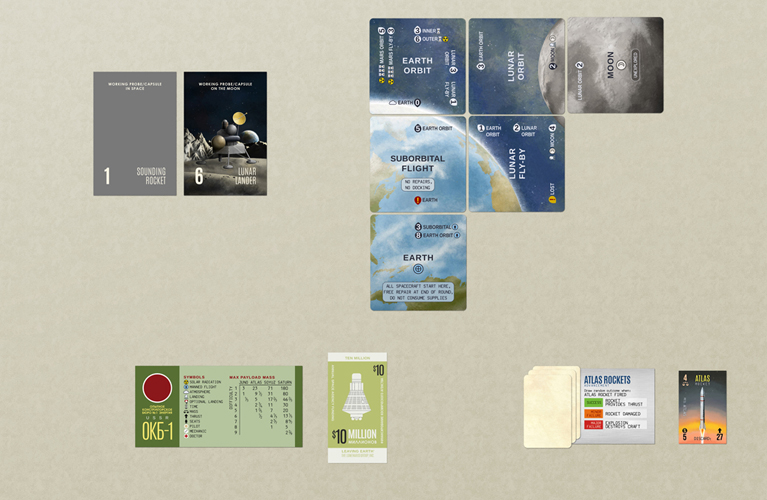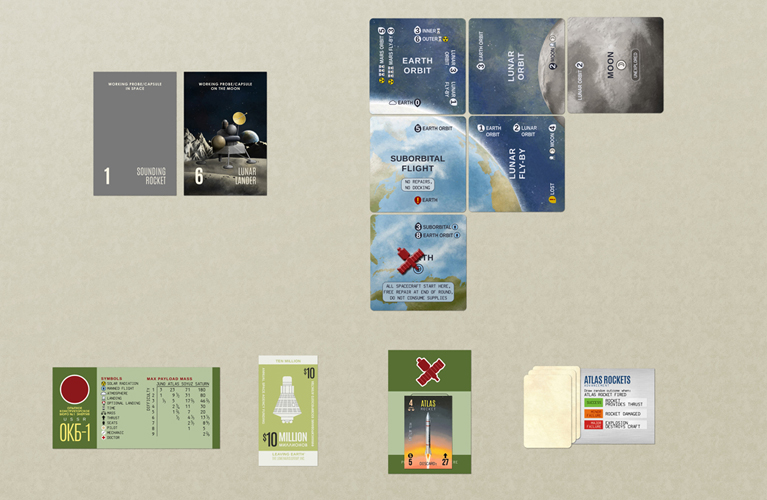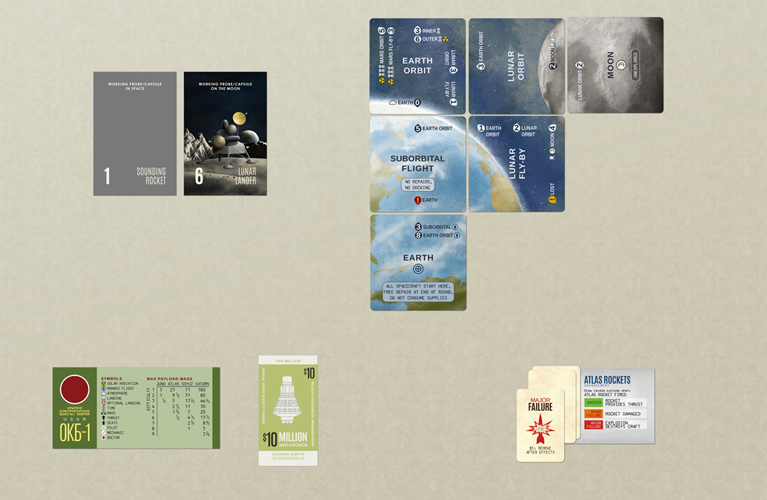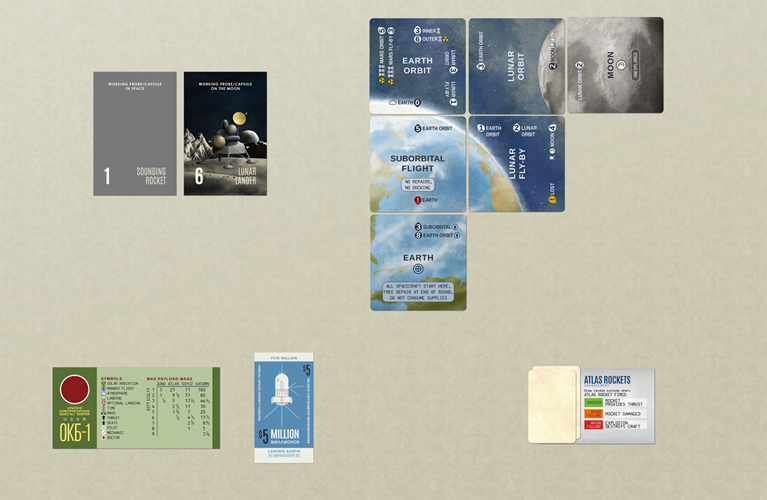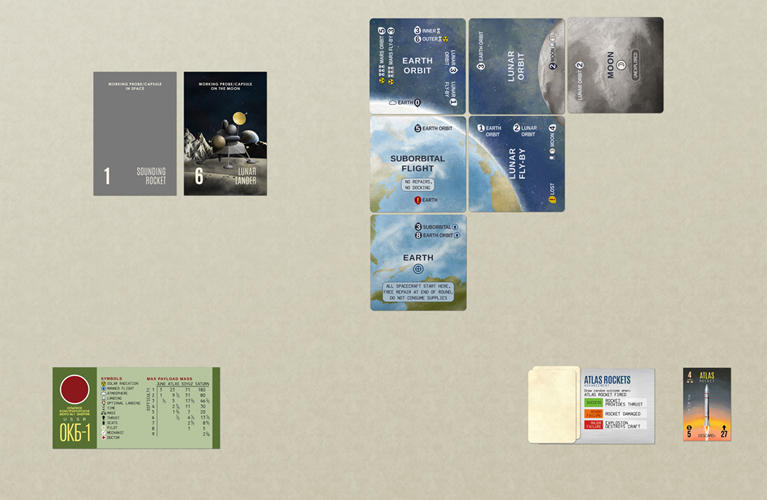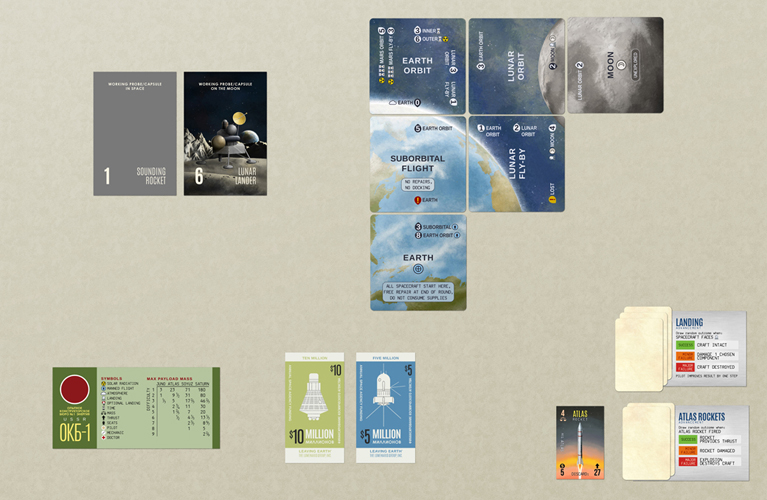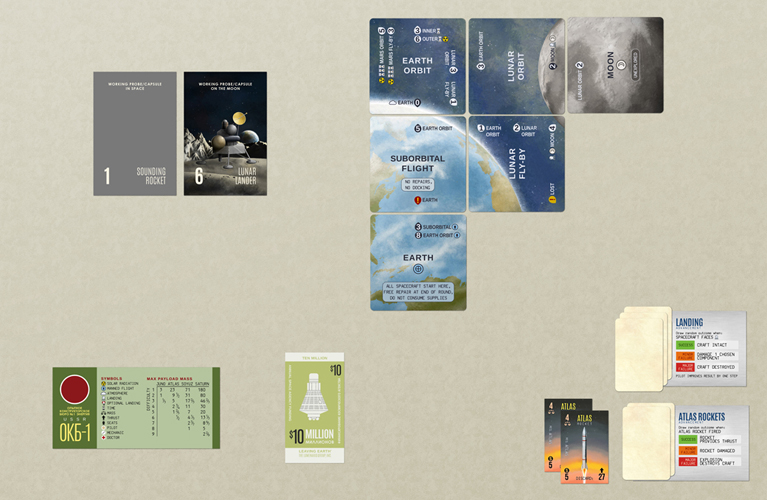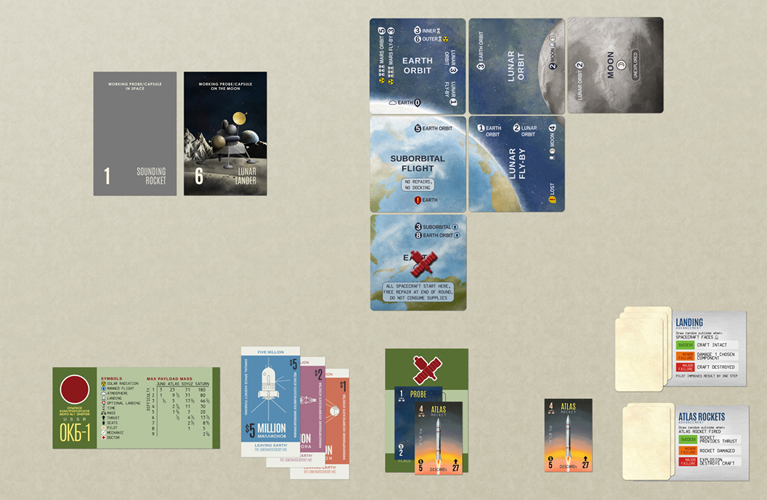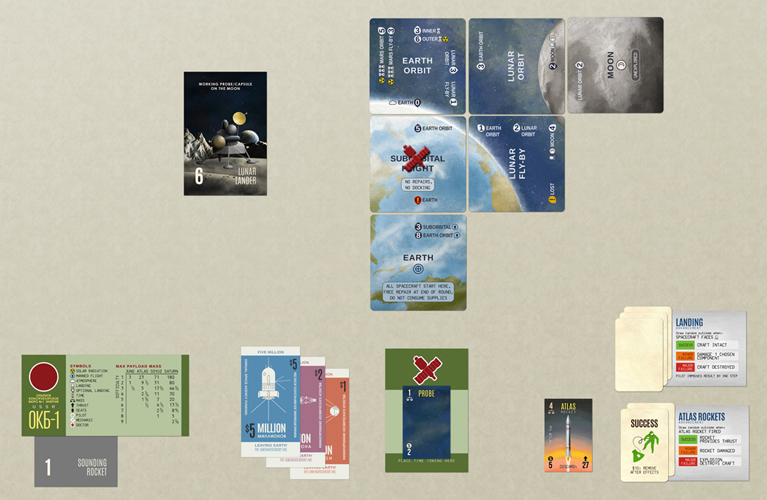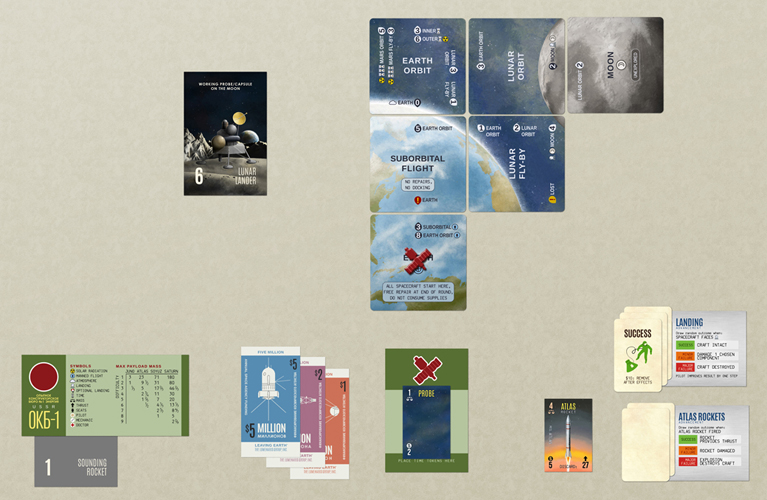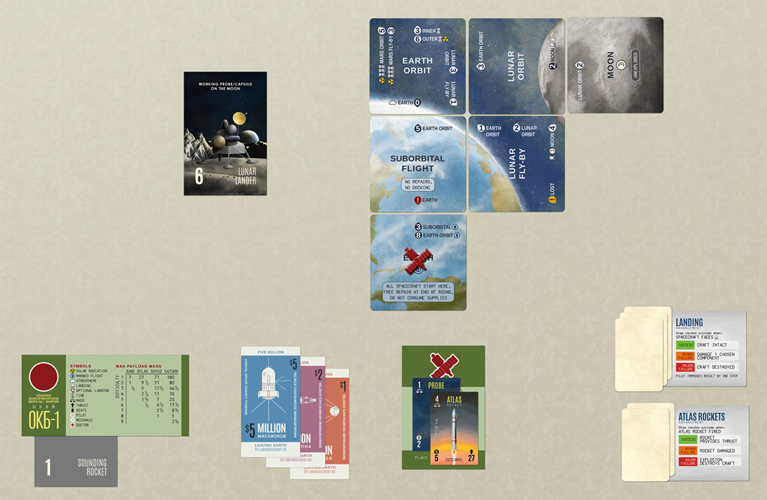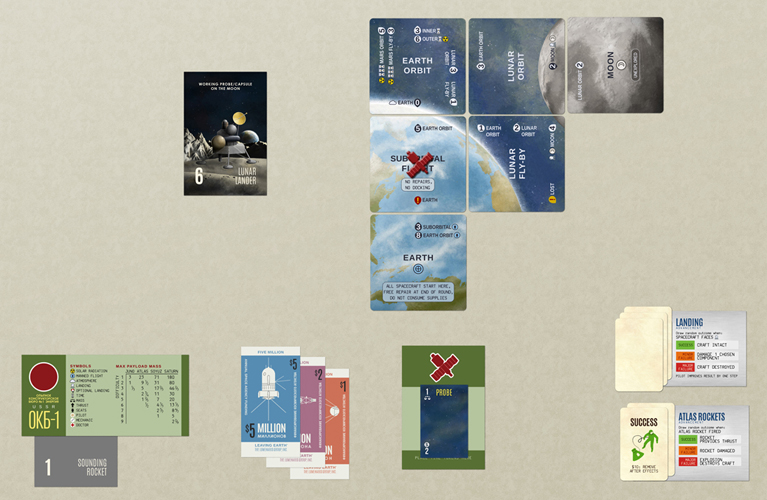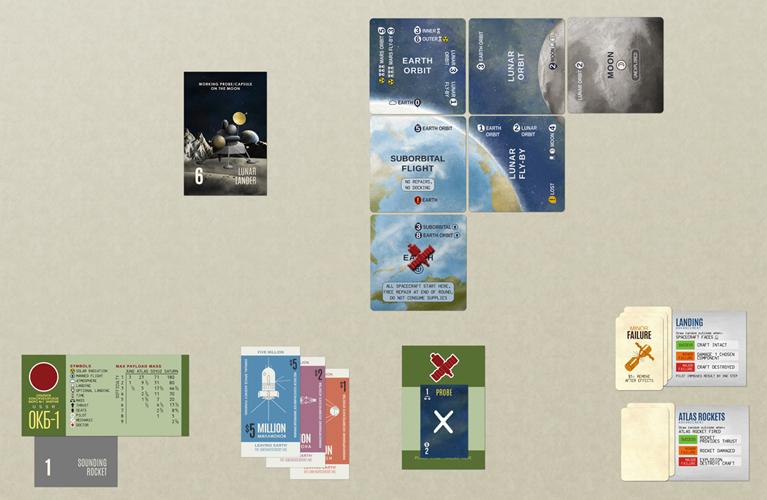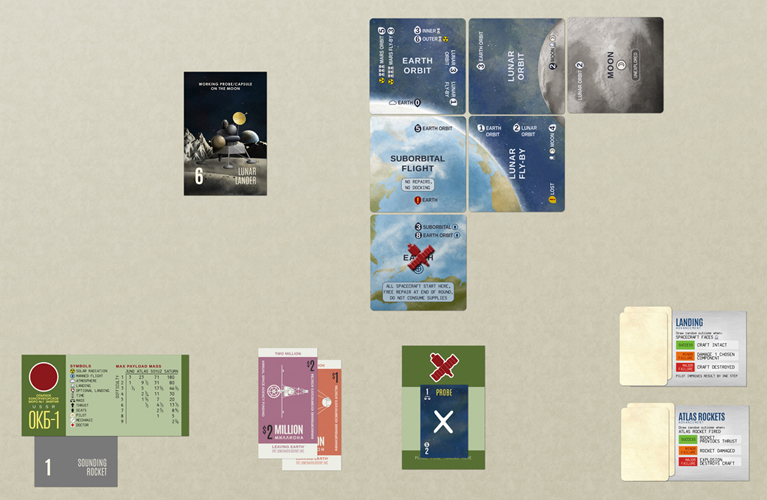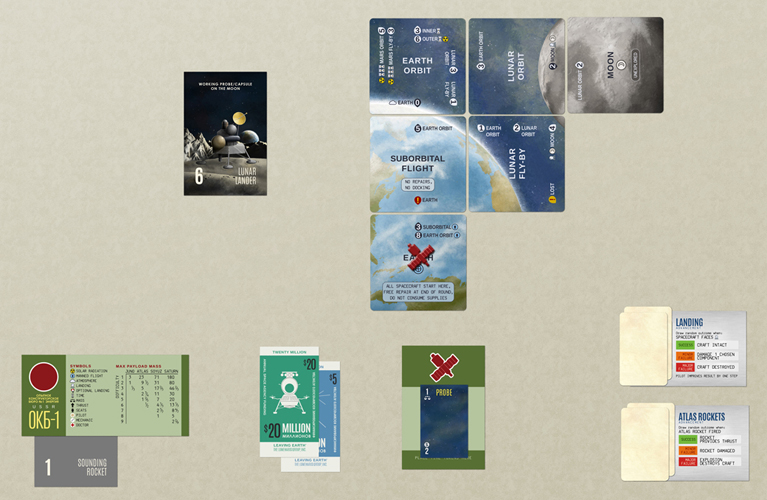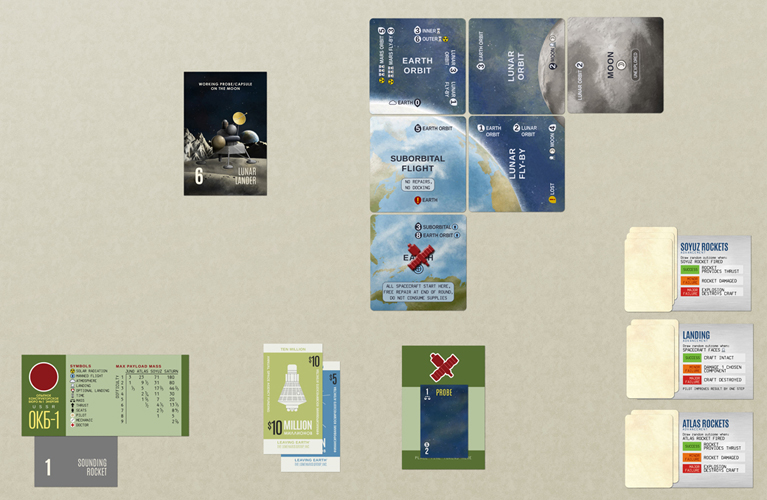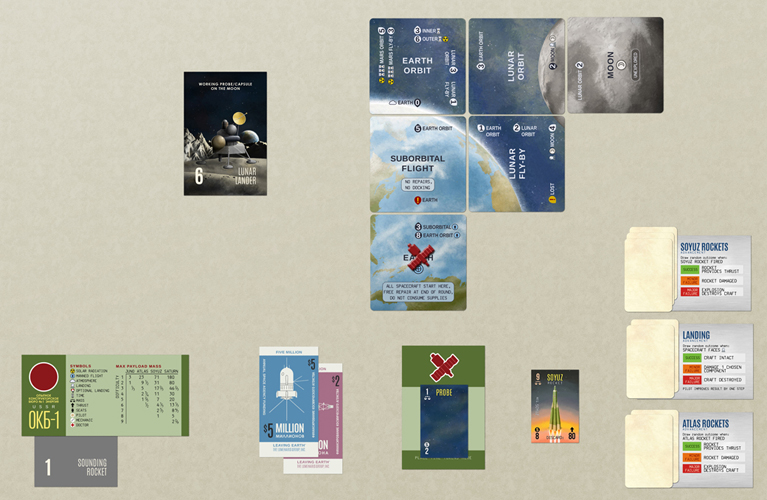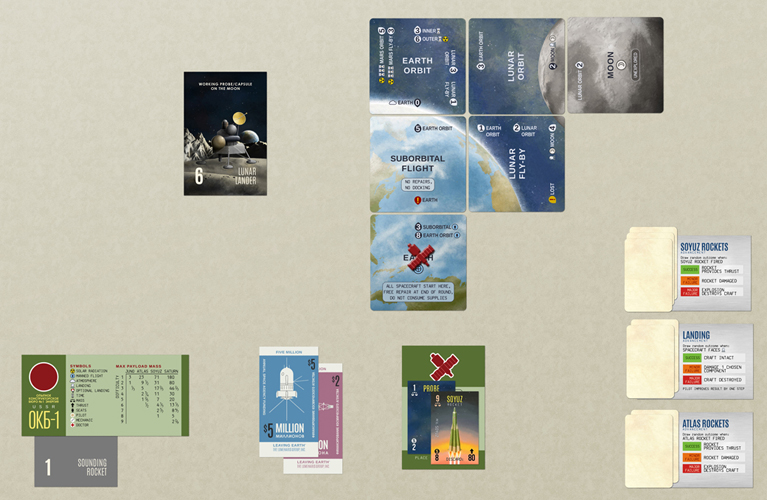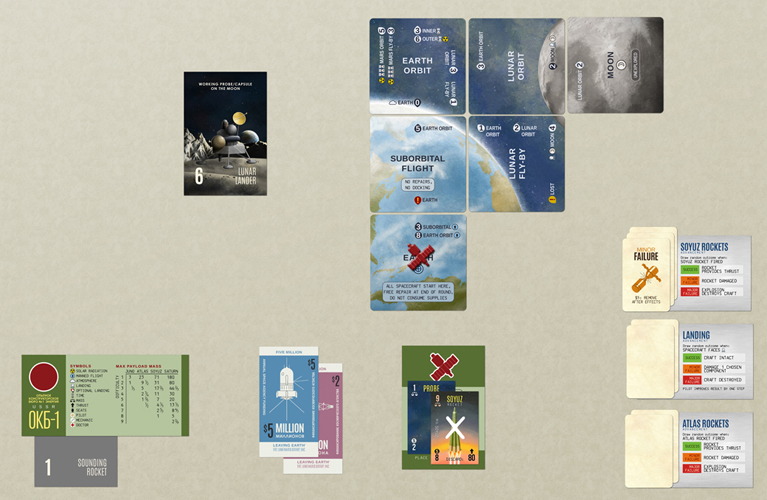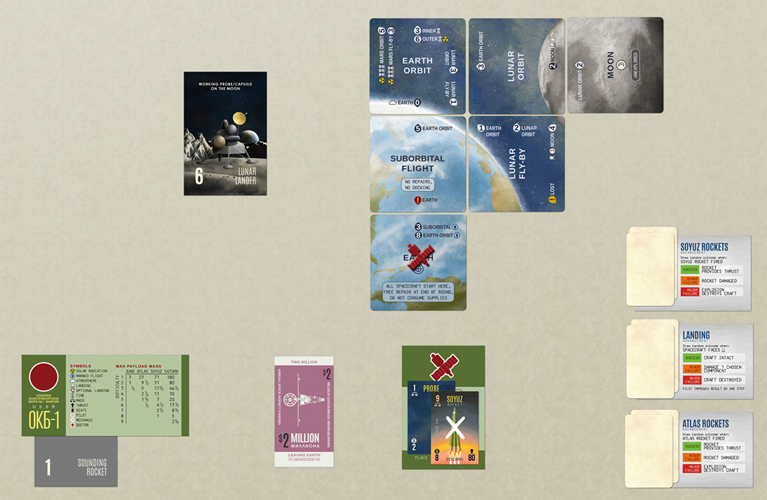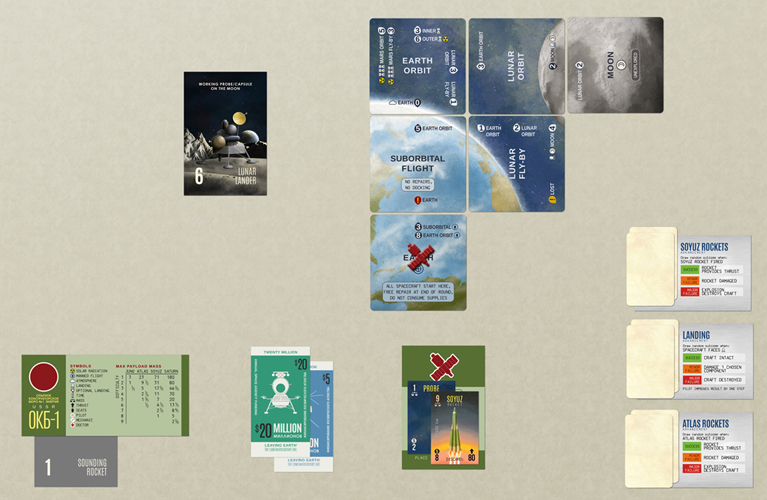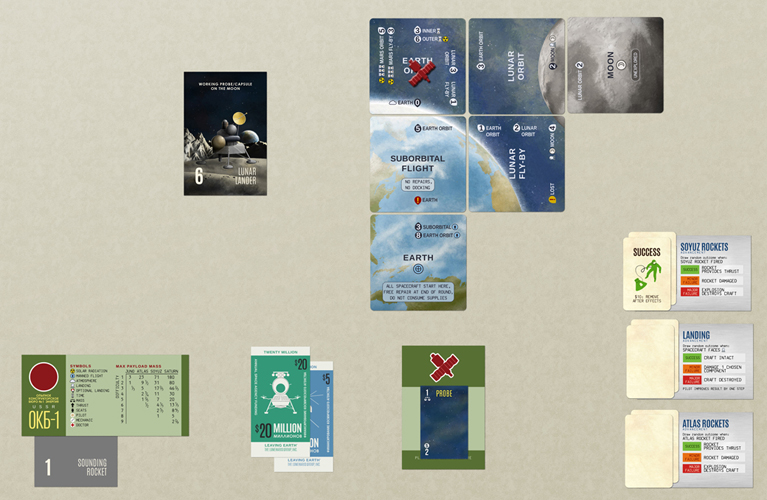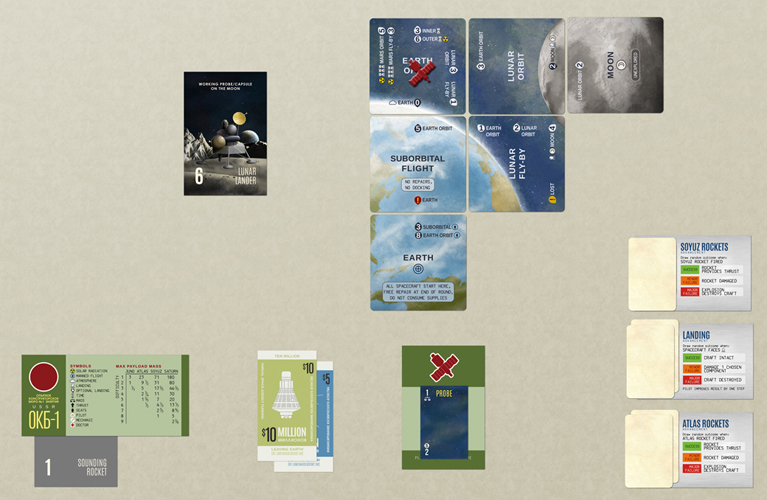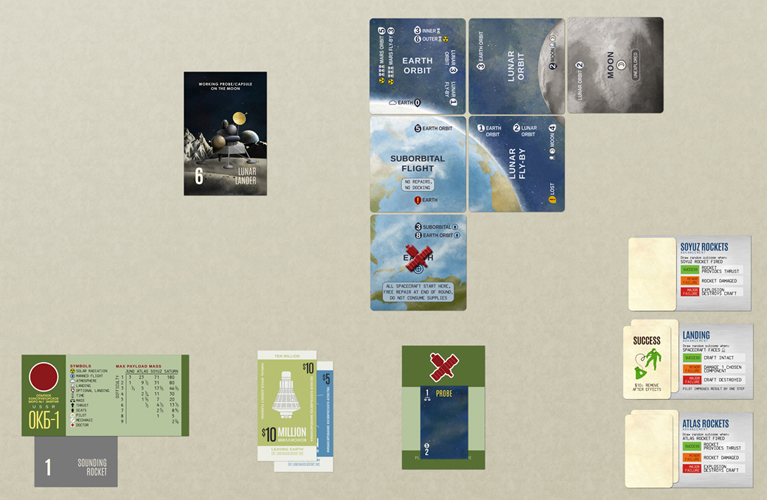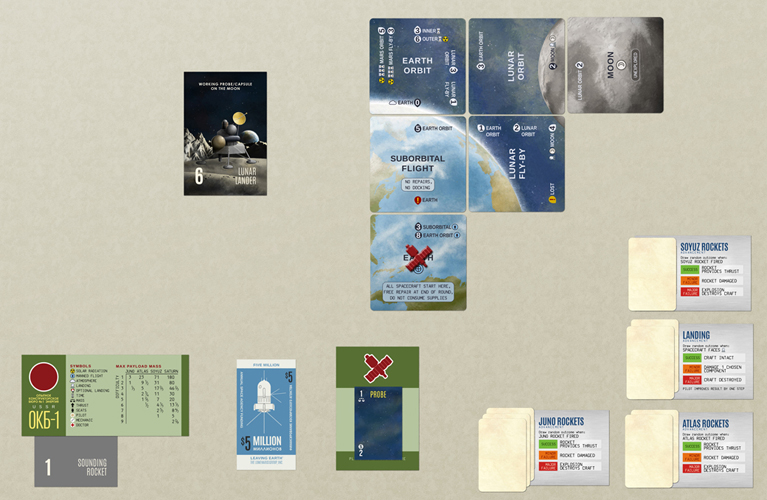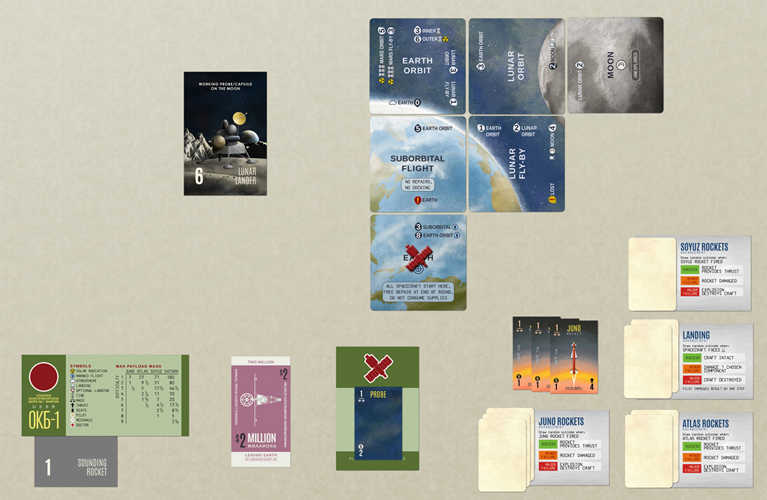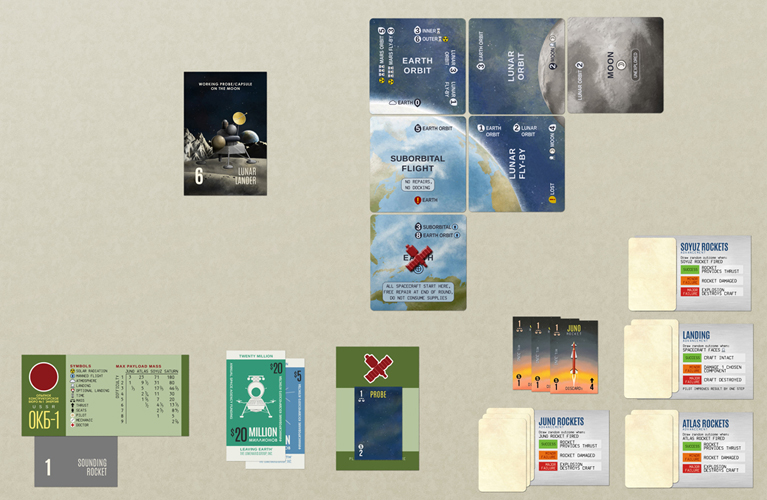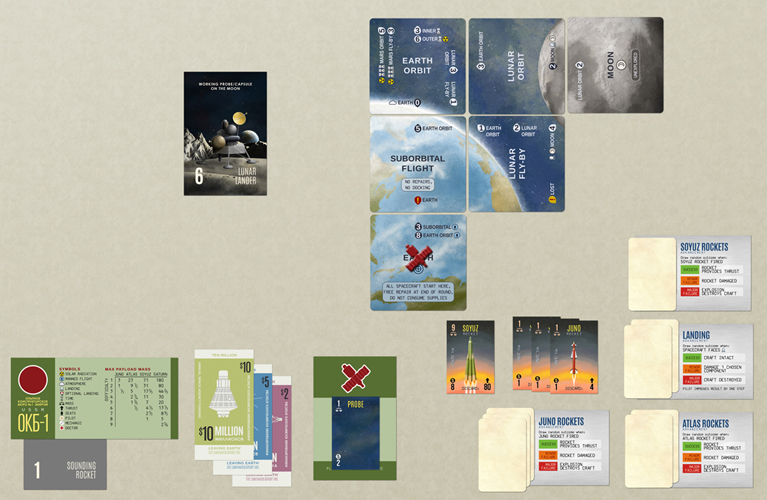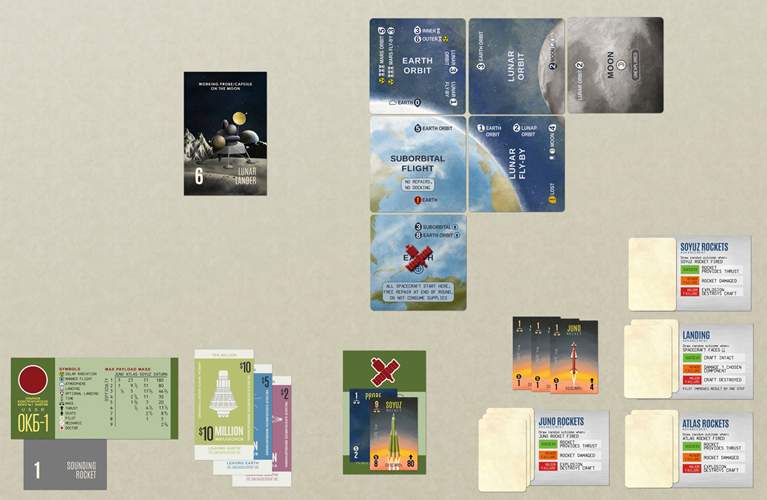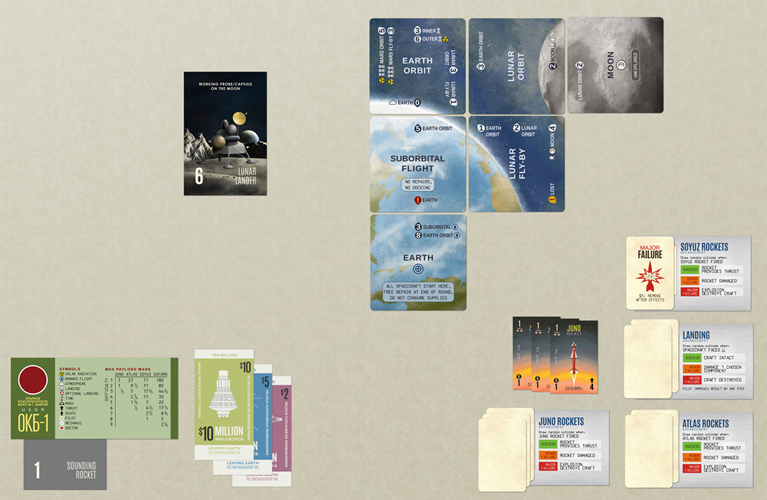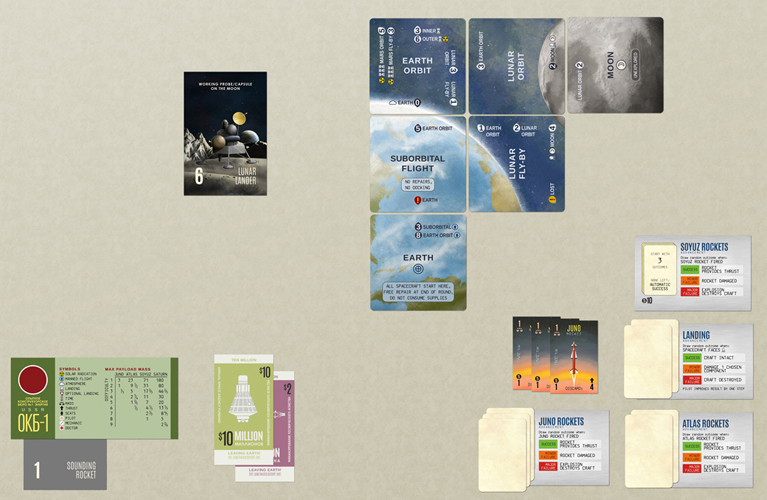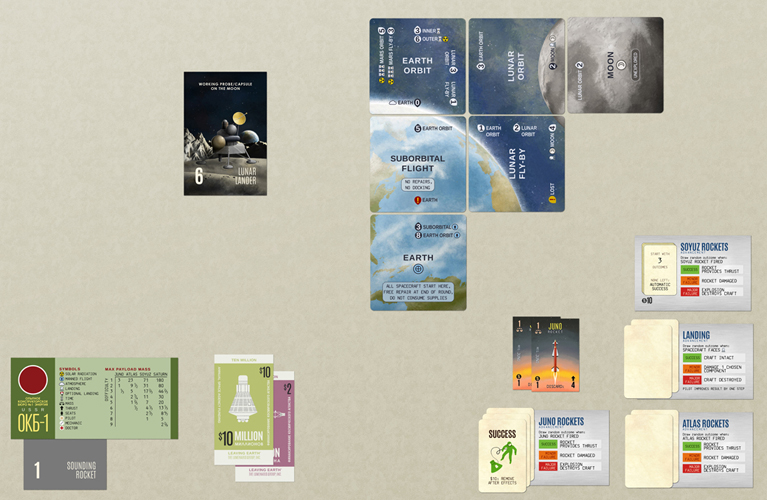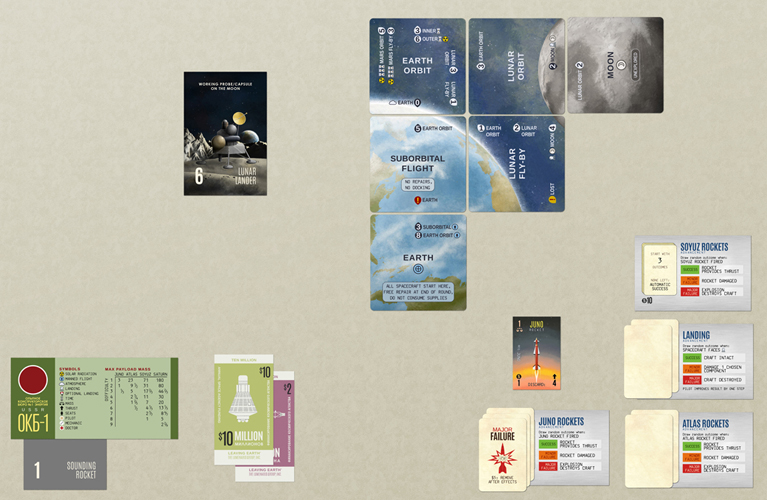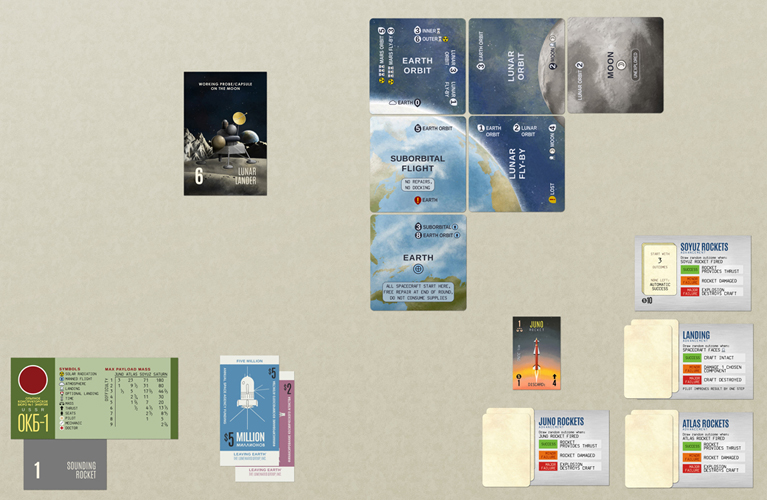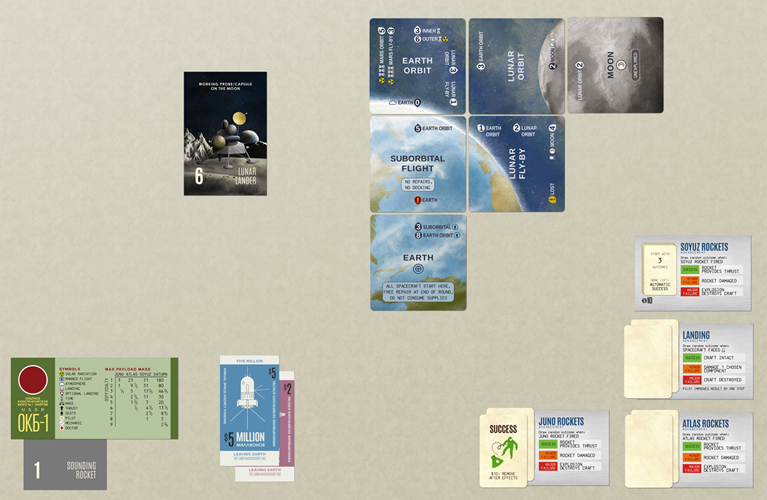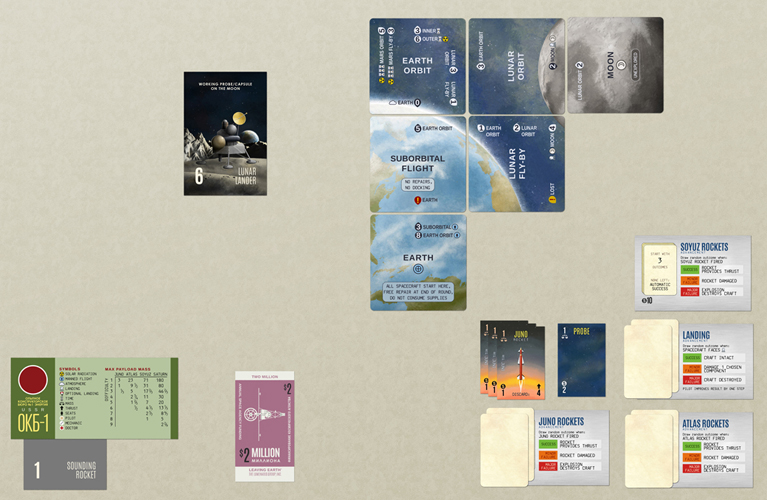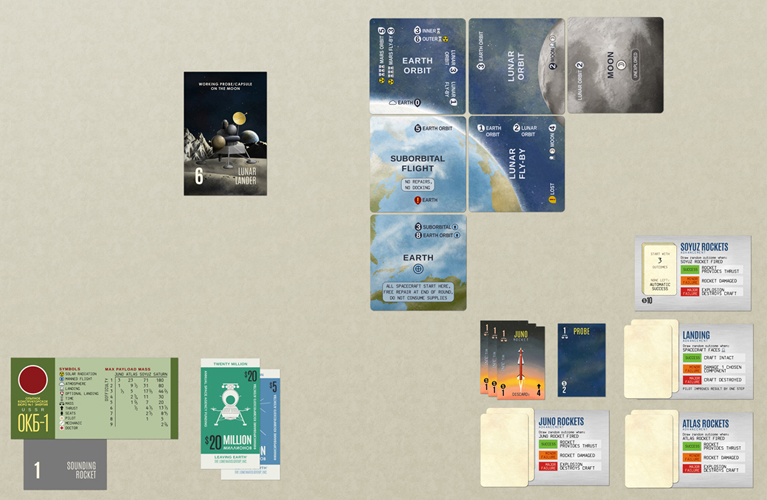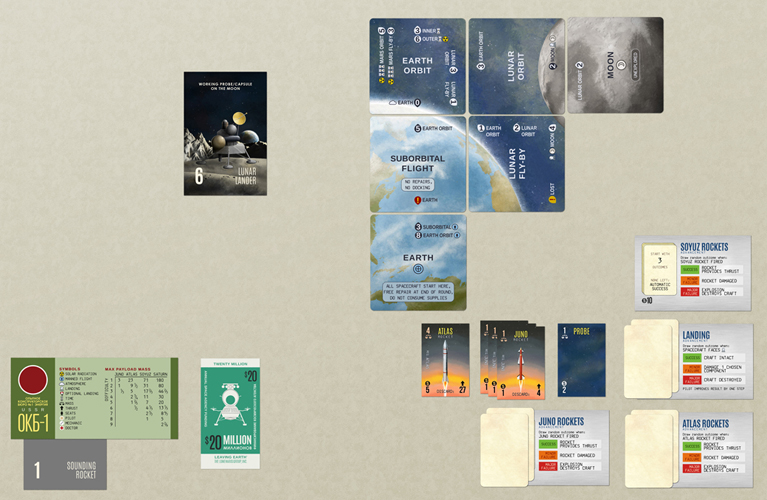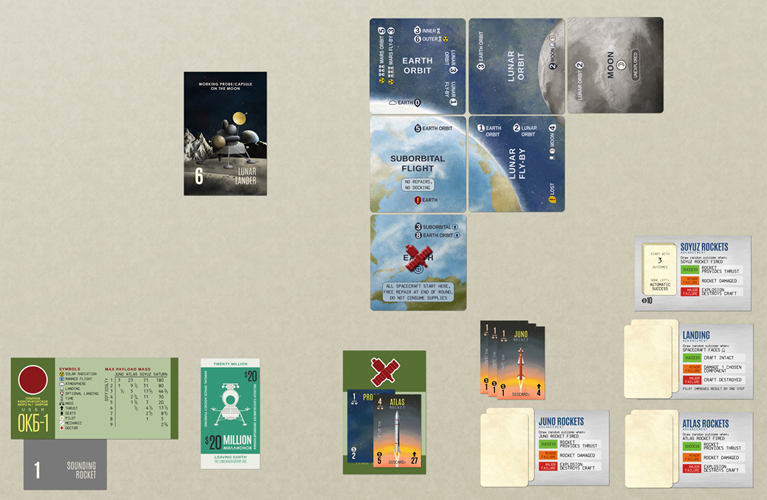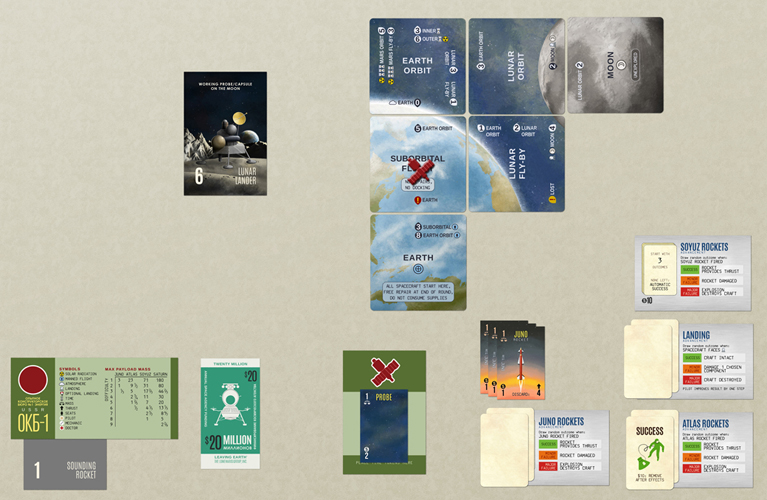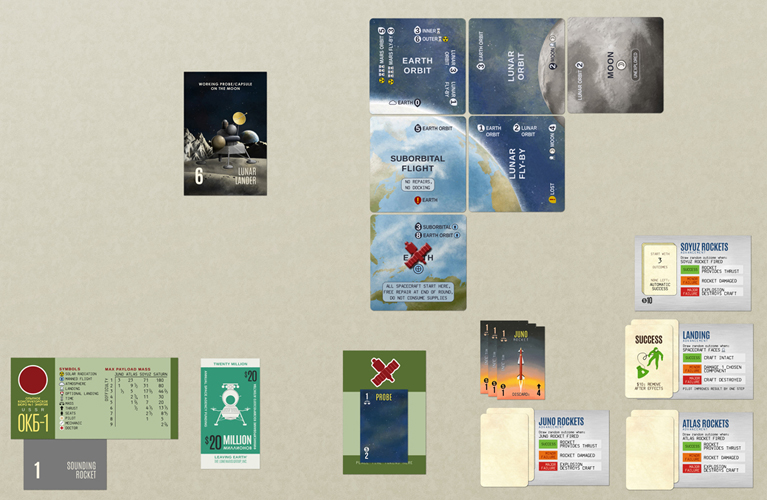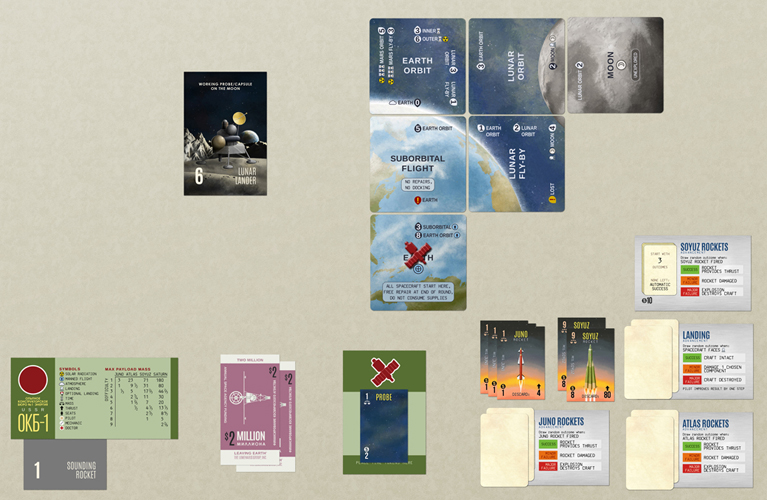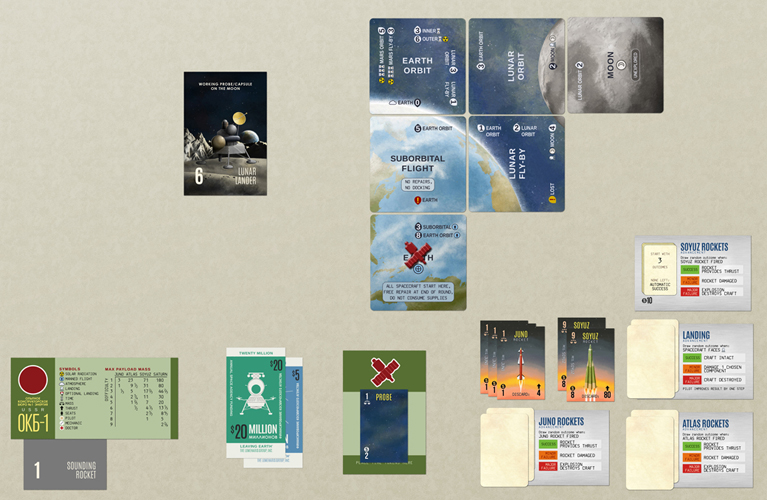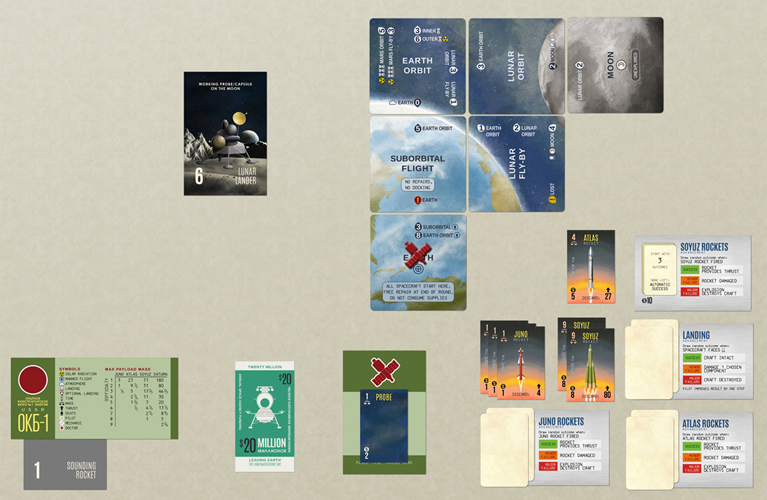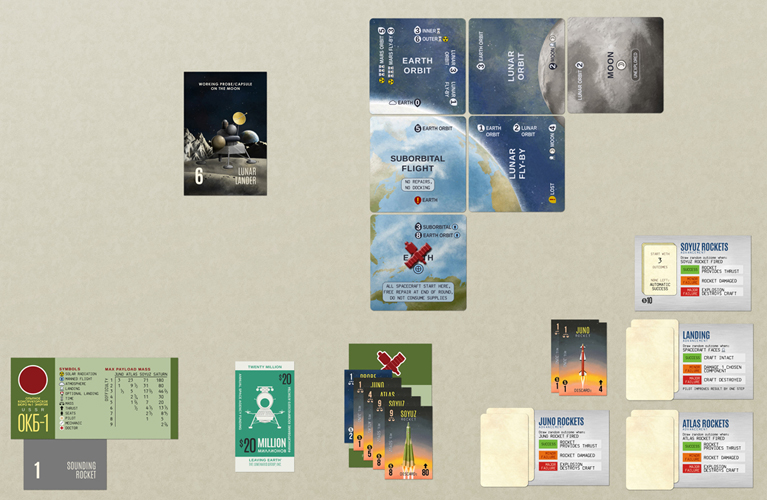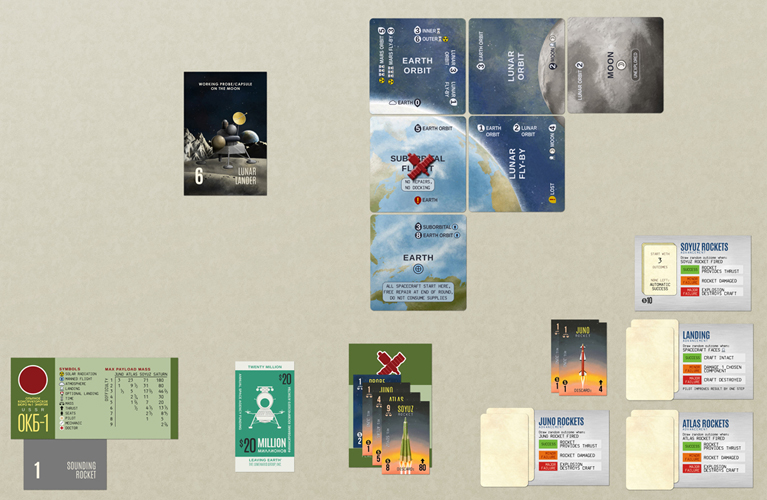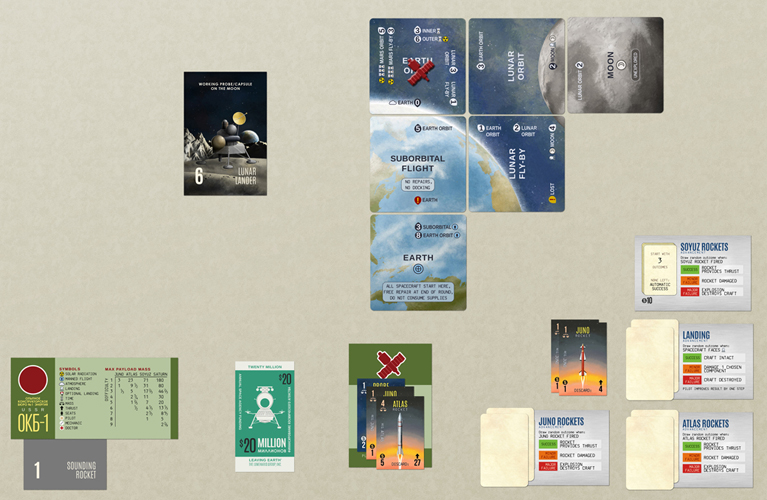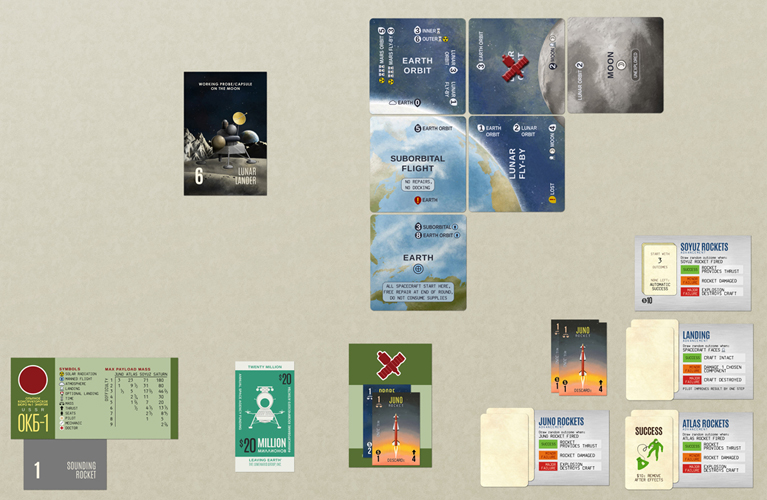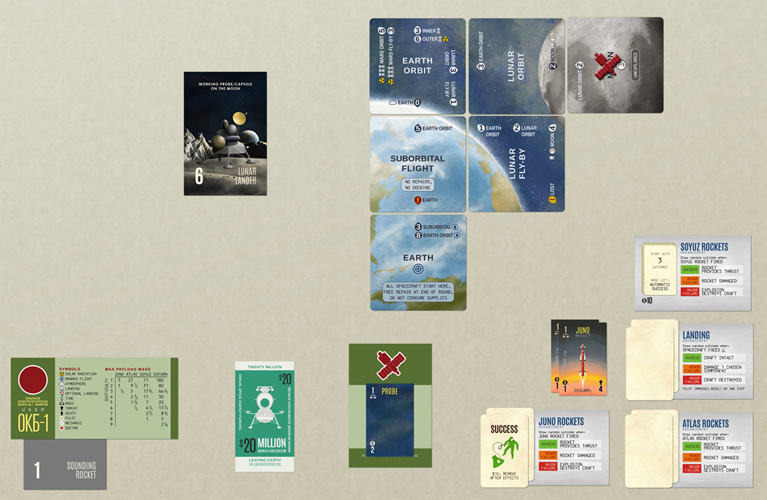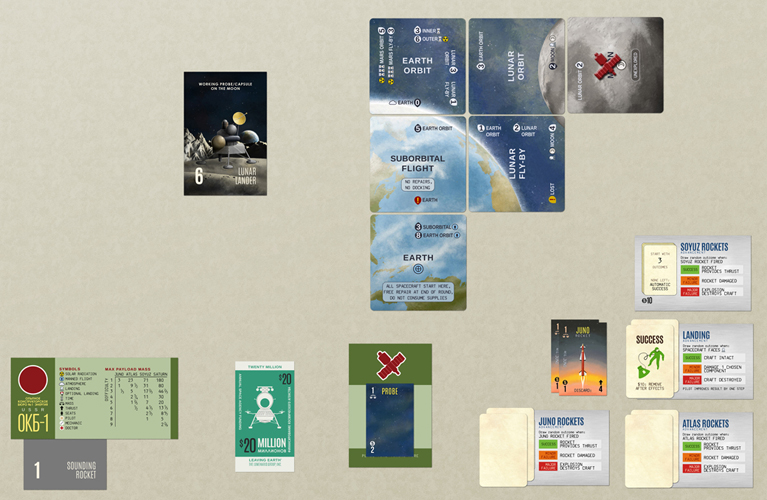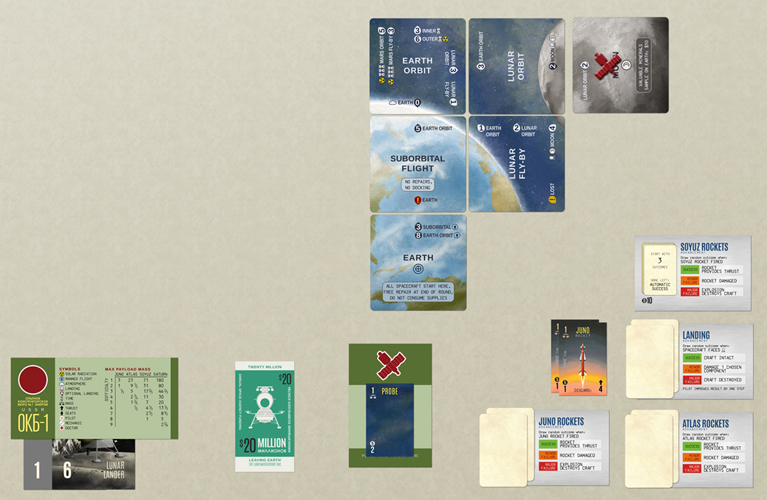Shopping Cart
Page loading...
Demo Game
This is a simple demonstration of a quick, single-player game of Leaving Earth. (Not all of the artwork is done yet, by the way, so don't be surprised to see some very plain-looking components.)
In this demonstration, we're looking at the mechanics of what a player does during the game. While all this is happening, a player would be planning their upcoming missions. This planning isn't shown here, but it would make a good subject for a later demonstration.
Setup ◀ ▶
We start by drawing the random missions for this game. Each time you play, you're likely to get a different set of missions. These determine what actions are worth points in the game, so the missions you get set the goals for the entire game. Normally we'd have at least five missions, but for this demonstration we'll just use two: Sounding Rocket which requires you to put a probe in space, and Lunar Lander which requires you to put a probe on the Moon.
Setup ◀ ▶
Next we shuffle the explorable locations. Each place that can be explored (like the Moon) has several different cards, with different environmental conditions. Each time you play, the nature of the Solar System could be quite different. Because we didn't draw any missions to go anywhere further than the Moon, the other explorable locations (like Mars or Venus) won't be needed for this game. After shuffling the Moon cards, we draw one, leaving it with the "unexplored" side up. We put the rest of the Moon cards back in the box without looking at them.
Setup ◀ ▶
Now that we've drawn our one Moon card, we lay out the rest of the locations to go with it. If we had any reason to go further (like to Mars) we could lay out those locations as well – but for this demonstration, we won't have to go anywhere further than the Moon.
Setup ◀ ▶
Next we set out the bank – all the cards that can be acquired during the game. Components represent parts of a spaceship, like rockets or capsules. Advancements represent technological advances, like knowing how to land on a body without using parachutes. When you research an advancement it starts with some outcomes on it, representing success and failure when you use that advancement. Money is, well, money. For the rest of this demonstration, we'll leave the bank off-screen.
Setup ◀ ▶
Each player runs a space agency of their choice. You take a space agency card with some reference material to consult during the game, a set of spacecraft cards to show what components your spacecraft are composed of, and a set of matching spacecraft tokens to show where your spacecraft are. For the rest of this demonstration, we'll leave the spacecraft cards and tokens off-screen unless they're actually in use.
1956 ◀ ▶
At the beginning of the year, everyone's money is reset to $25. (You're running a government agency – you're assumed to always use all your budget every year. If you have any leftover money from last year it goes away.) On your turn you can do as many actions as you like, in any order – as long as you can afford to do them, of course.
1956 ◀ ▶
We start by researching Atlas rockets. This costs $10. We take the Atlas advancement card and put three random outcome cards on it, face down.
1956 ◀ ▶
We assemble a spacecraft for launch. Pick a spacecraft card, put components on it, and put the matching spacecraft token on Earth. Assembling and disassembling spacecraft can be done on Earth for free. Next we're going to launch this spacecraft into Suborbital Flight. This maneuver has a difficulty of 3 (seen on the Earth location card), so we'll need 3 thrust for each unit of mass. The spacecraft has a mass of 4 (upper left corner of the component cards), so it'll need a thrust of at least 12. An Atlas rocket provides 27 thrust (lower right corner), so this should work.
1956 ◀ ▶
Upon firing the Atlas rocket, we reveal a random outcome from our Atlas advancement – and it's a major failure. The rocket explodes, destroying the entire spacecraft (so we put the component back in the bank and set the spacecraft card and token on the side for future use).
1956 ◀ ▶
When you discover a failure outcome on one of your advancements, you can pay $5 to remove it. If you don't, it gets turned face down and shuffled with the other outcomes on that advancement. Here we pay $5 to remove the major failure, thereby improving the odds of success for any later Atlas rockets.
1956 ◀ ▶
With our last $5 we buy another Atlas rocket. At this point we decide we're done with our turn.
1957 ◀ ▶
We spend $10 on researching Landing. Some bodies in the game can be landed on freely (like Earth) because of the thick atmosphere. Other bodies (like the Moon) require a bit more technique. Whenever you perform a maneuver that requires Landing skills, you reveal an outcome from the Landing advancement to see what happens.
1957 ◀ ▶
We buy a probe for $2. A probe doesn't do anything by itself, but it is required to complete certain missions.
1957 ◀ ▶
We attempt to launch the spacecraft into Suborbital Flight using the Atlas rocket on board. The attempt is successful, so the rocket is consumed and the token moves to the new location. This completes the criterion for the mission Sounding Rocket, so we take the mission card to show that we were the first to complete it.
1957 ◀ ▶
Getting back to Earth from Suborbital Flight is free (in fact, it's automatic if you don't do anything), so we bring the probe back down to Earth. You don't have to use the Landing advancement to land on Earth, but you may choose to use it if you like, just to practice. We do so, drawing a success outcome from Landing, so the probe makes it back safely.
1957 ◀ ▶
Let's test all that again – we assemble a spacecraft using the probe and our remaining Atlas rocket.
1957 ◀ ▶
The landing isn't quite so successful. We could have landed safely (using the parachutes that all spacecraft are assumed to have), but since we chose to use our Landing advancement instead, we have to face the consequences. It's a minor failure, which means one component on board is damaged from the impact. Since there's only one component (the probe), that's the one that gets damaged. We flip it over so the damaged side is up (shown with an X in this demonstration). It's damaged rather than destroyed, so we keep it on the spacecraft card.
1957 ◀ ▶
Before doing anything else, we have to decide whether to pay to remove the outcome or not – it's only $5 to remove a failure, so we pay the $5 and remove it.
1959 ◀ ▶
We pay $10 to remove the success outcome from our Soyuz advancement. Once all of the outcomes have been removed from the advancement, Soyuz rockets will be successful all the time.
1960 ◀ ▶
We pay $5 to remove the failure. This leaves us with a Soyuz advancement with no outcome cards on it. This means that any Soyuz rockets we use in the future will be automatically successful.
1962 ◀ ▶
It's time to head to the Moon. We assemble a spacecraft consisting of a probe, a Juno stage, an Atlas stage, and two Soyuz stages. Let's see if this will be able to launch. The first maneuver (into Suborbital Flight) has a difficulty of 3, meaning that each unit of mass will require 3 units of thrust. Adding up the masses (upper left corners) we see that the spacecraft has a total mass of 24. That means we need at least 72 thrust (since 3 × 24 = 72). A Soyuz rocket provides 80 thrust, which is plenty.
1962 ◀ ▶
The first stage is an automatic success. This leaves us with a lighter spacecraft, having a mass of only 15. However, the next maneuver has a difficulty of 5, so we'll need at least 75 thrust. Another Soyuz rocket is sufficient.
1962 ◀ ▶
The second stage is also an automatic success. Now the spacecraft has a mass of only 6. To get to Lunar Orbit (a difficulty of 3) we need at least 18 thrust. An Atlas rocket provides 27 thrust, which is plenty.
1962 ◀ ▶
The third stage is a success, putting our spacecraft into Lunar Orbit. For lunar descent, we have a spacecraft with a mass of only 2. The maneuver has a difficulty of 2, so we need at least 4 thrust, which is exactly what a Juno rocket provides.
1962 ◀ ▶
The landing itself is successful, now we just need to find out what the Moon is like, since until now it has been unexplored.
1962 ◀ ▶
Flipping over the Moon location card, we see that there are valuable minerals here on the Moon. We take the Lunar Lander mission card and the game is over.
© 2010-2016 The Lumenaris Group, Inc.
We build products that bring families together. Lumenaris is a trademark of the Lumenaris Group, Inc. See notes.
If you'd like to learn more about how you can carry Lumenaris products, read about becoming a retailer.


